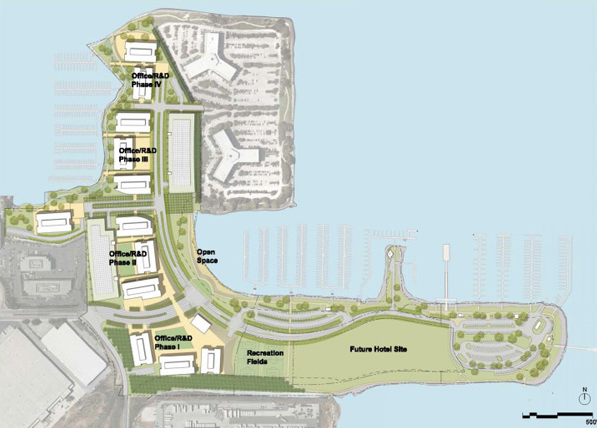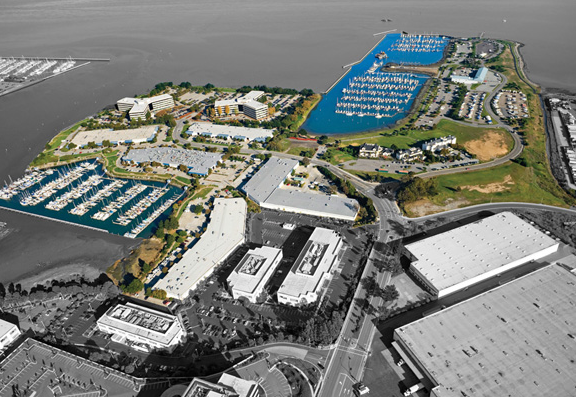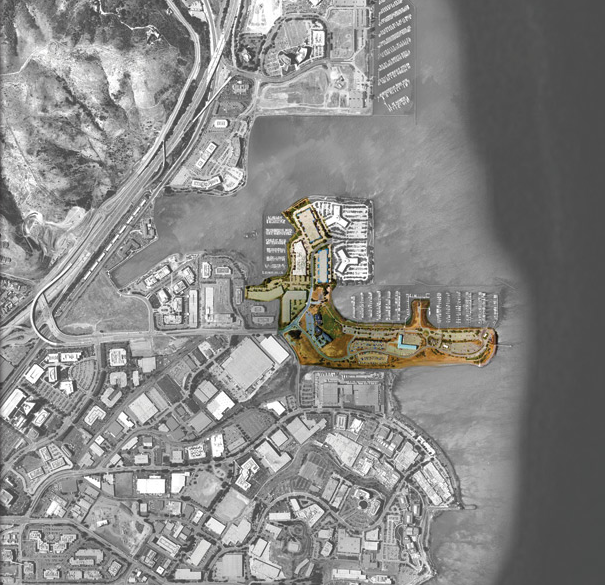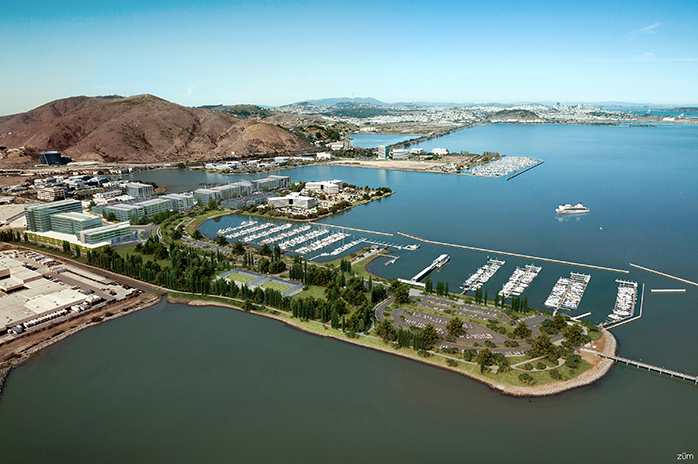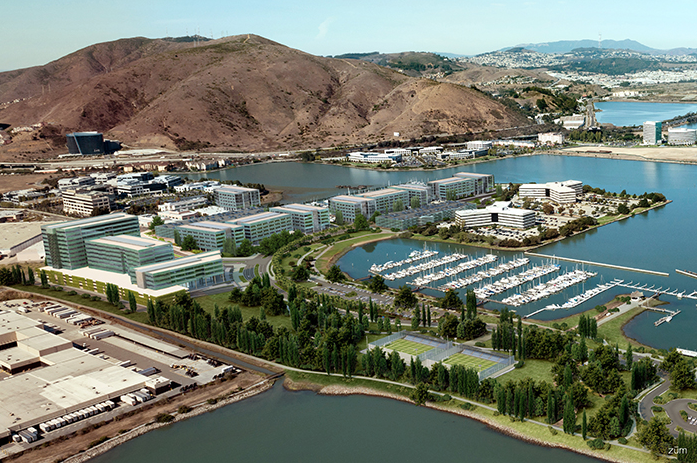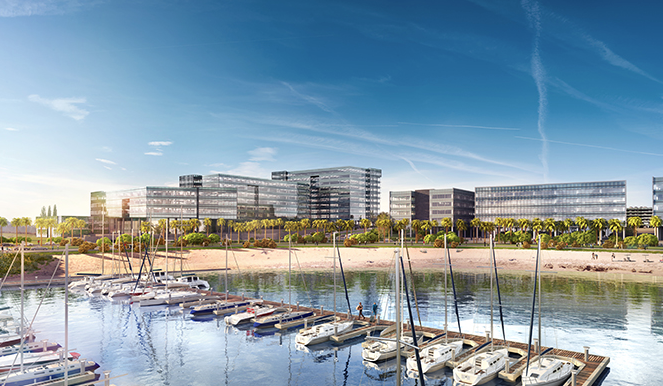The following letter from James Lee Han is a comment on the LAFCo Municipal Service Review of the San Mateo County Harbor District.
Re: Municipal Service Review of San Mateo County Harbor District
Good afternoon Ms. Poyatos,
Please include this letter as a comment on the LAFCo Municipal Service Review of the San Mateo County Harbor District. My comments are wide-ranging and cover a number of topics, but please note my strong support for the current board of Harbor Commissioners and Harbor District staff and my strong opposition to the dissolution of this special district based on the board’s recent achievements and the key role the board plays in providing county taxpayers with direct representation and a much-needed diversity of backgrounds and perspectives.
Please also note my deep concerns with the partiality, or lack thereof, of elected officials in San Mateo County whose inconsistent positions in relation to the Harbor District and its board leaves me deeply worried that dissolution of this special district in favor of an appointed body will be a net loss in representation and transparency for the voters of San Mateo County.
Below are my comments.
I. Recent Achievements
Since the ousting of two long-time incumbent board members last November who were the most vocal in their resistance to attempts at reforming the Harbor District, the board has worked together smoothly on a wide variety of issues vital to the District. Below are examples of achievements in the last six months alone, most of them under the tenure of former board president Sabrina Brennan.
January 2015: The board hired an executive search firm to conduct a formal search for a new General Manager. The board also voted unanimously to terminate membership in the California Maritime Infrastructure Bank/Authority. The Commission formed standing committees for the first time in many years. Those committees include a Finance Committee, a Water Quality and Public Safety Committee, and a Communications and Marketing Committee.
February 2015: The board held a Board Dynamics Workshop, conducted a public site visit at Pillar Point Harbor and approved a Coastal Regional Sediment Management Plan Letter from the Beach Replenishment Committee.
March 2015: The board voted to stop paying health insurance benefits to Commissioners upon expiration of current terms of office.
April 2015: The board adopted a list of Board Norms as a follow-up to the Board Dynamics Workshop. The board also voted unanimously to support relocating the District's headquarters near Pillar Point Harbor and the board appointed two commissioners to the Oyster Point Marina Liaison Committee.
May 2015: The board approved a letter to the Bay Conservation and Development Commission from the Beach Replenishment Committee expressing concerns over sand mining in San Francisco Bay and its effects on coastal areas under the Harbor District’s jurisdiction.
June 2015: The new district office in El Granada was opened for business. The board voted unanimously to designate the Harbor District as the lead agency in the sand replenishment effort at Surfer's Beach.
II. Importance of Elected Representation and Diversity
Supervisor Horsley expressed to media that the current board “is not truly representative of all county residents.”[1] He went on to suggest that by-district elections of board members or county-appointed board members would provide better representation.
Yet diversity on the five-member Harbor District board is currently at its all-time best with two women serving simultaneously, a Latino and a Filipino commissioner serving simultaneously for the first time in history, and three openly LGBT commissioners serving simultaneously for the first time in history. The Harbor District may in fact boast one of the few elected bodies in the Bay Area or even California that has a majority of LGBT representatives.
As any follower of San Mateo County politics understands, this level of representation of people with different ethnic backgrounds and sexual orientations in county where countywide elected positions continue to skew in favor of white, middle-aged men is rare, positive, and important. As a gay person, an Asian person, and a native of San Mateo County, I am concerned that any long-time countywide elected official who is familiar with San Mateo County politics would choose to unfairly target one of the most diverse elected bodies on the Peninsula for not being “truly representative” of all county residents. If I had to choose between electing a Harbor District commissioner or handing over the power to appoint commissioners to elected officials who see “representative” in such skewed terms, I would definitely choose the former.
Appointed governance also triggers memories of the $761,663 embezzlement scandal at the county’s Mosquito and Vector Control District. Despite being a body with more than four times the number of representatives than the Harbor District’s five-member board, apparently none of the Mosquito District’s 21 appointed trustees required that their General Manager perform a background check before hiring a Finance Director with a criminal record. Unfortunately, our county’s past history with appointed boards does not suggest that such boards provide residents with a better governance and management of taxpayer funds.
It should be noted that the diversity of the current board is not limited to ethnic background and sexual orientation. This five-member board very clearly has a diversity of opinions, and yet they do not exhibit the open animosity of previous boards in years past, such when former commissioners Will Holsinger and Jim Tucker were consistently raising their voices towards a new commissioner elected in 2012, who also happened to be the sole female Commissioner on the board at the time. Since the removal of Commissioners Holsinger and Tucker in the 2014 election, board dynamics have significantly improved. It is unreasonable to expect the current board to correct decades of mismanagement and poor board dynamics in a span of six months.
III. At-Large vs. By-District Elections
Supervisor Horsley’s claims that by-district elections of board members might better represent county residents ignore a key fact about the Harbor District:
While the special district does collect property taxes countywide, its jurisdiction is limited to two sites: Pillar Point Harbor on the coast, and the city of South San Francisco. Both these sites are covered by only two of the five supervisorial districts in San Mateo County.
While by-district elections make sense for elections to the board of supervisors, they do not make sense for a special district whose jurisdiction is limited to two out the five districts. While Pillar Point Harbor and Oyster Point Marina are public resources that are paid for by the entire county, they also directly impact and are a part of two distinct communities that deserve the opportunity to have a greater level of of representation and input on matters of importance. By-district elections would mean that three of the five representatives on the District’s board, a full majority, would not be directly accountable to any of the communities directly impacted by their decisions on Pillar Point Harbor or Oyster Point Marina.
There are other aspects of the current Commissioners’ backgrounds besides ethnicity and sexual orientation that provide much needed perspective and direction to the functioning of the Harbor District. Commissioner Brennan is a local resident near Pillar Point Harbor with a long track record of advocating for the environment, coastside issues, and open government. Commissioner Bernardo works for the Port of Oakland, while Commission David is a marine biologist who lives on the coastside. Commissioners Mattusch and Parravano are both involved in the fishing industry.
All of these different perspectives have high relevance to a special district like the Harbor District and only serve to enrich the district’s functioning. Through their ties to their own communities and to the culture of harbors, marinas, and ports, the commissioners offer a special benefit to the public they represent. By-district elections would have the effect of drastically limiting opportunities for these relevant perspectives and impacted communities to have representation on the board.
IV. Water Quality
The Harbor District should not charge boaters to use pump-out stations as suggested in the Municipal Service Review. It is important to protect water quality and removing any potential disincentive to use pump-out stations is vital to protecting coastal and bay waters.
V. Infrastructure and Facilities
The 2014 Infrastructure and Facilities Assessment reports for Pillar Point Harbor and Oyster Point Marina make it clear that past Harbor Commission boards have a pattern of deferring capital improvement projects and maintenance projects in part due to a lack of available funds resulting from debt service, termination benefits, and employment liabilities.
Pillar Point Harbor
Pillar Point Harbor facilities are in dilapidated condition: Dredging is required to prevent boats from running aground, Johnson Pier is near the end of its useful life, and Romeo Pier is in hazardous condition and requires removal. Pillar Point Harbor also lacks required ADA access as well as many other repairs and public safety improvements included in the PPH Infrastructure and Facilities Assessment report. It should be noted that Harbor Patrol staff at Pillar Point Harbor provide a majority of the District’s non-enterprise functions, including search and rescue services.
Oyster Point Marina
Oyster Point Marina’s infrastructure is at significant risk from flooding during high tide events. Oyster Point Marina is owned by the City of South San Francisco and the marina’s facilities are built on a landfill that is sinking into the San Francisco Bay. Significant funding will be required to address the unfortunate combination of a sinking landfill and a rising sea. Already the Harbormaster’s office becomes an island and the parking lot floods during high tide events, making access to the building very challenging.
Sea level rise will increasingly become a challenge along the San Mateo County bayfront, and any future development at Oyster Point Marina will require a tremendous amount of fill to mitigate landfill subsidence and sea level rise. Currently the roads are uneven because of subsidence, and as a result the Genentech bus regularly “bottoms out” on Marina Boulevard when shuttling commuters to and from the WETA ferry terminal.
VI. Joint Powers Authority
The Harbor District’s 49-year Joint Powers Agreement (JPA) with South San Francisco ends in 2026. The JPA has been in place for decades and the agreement has 11 years remaining.
Oyster Point Marina, operated under the JPA, is a greater burden on the District’s resources due to an average 60% slip occupancy rate. Two docks with tenant slips were removed to make room for the WETA Ferry Terminal and resulted in reduced opportunity for revenue. Opportunities for developing additional commercial lease space at OPM are limited because the District does not own the land.
Oyster Point Marina requires a much larger subsidy of its enterprise functions than does Pillar point Harbor. Harbor District property tax revenues currently generated within the City of South San Francisco are inadequate to fund marina operations, overhead and an allocation of debt service. Property taxes generated within South San Francisco that currently accrue to the SMCHD represent only about 10 percent of SMCHD’s current property tax revenues.
The City of South San Francisco should consider assuming full management responsibility for their marina and build additional commercial lease space to generate revenue, begin needed infrastructure improvements, and expand recreational opportunities.
Page 33 of the Municipal Service Review helps to clarify why Oyster Point Marina is not a fiscally prudent management opportunity for the either the Harbor District or the County of San Mateo.
VII. Past Leadership and Management
Starting with Commissioner Brennan’s election in 2012, the newer board members are a breath of fresh air when compared with prior leadership and management issues:
In 1998, Harbor Commissioner Don Shearer plead guilty to embezzlement of at least $115,000 from the Half Moon Bay Fishermen's Marketing Association. The theft was enabled in part by Pietro Parravano who signed a stack of blank checks that the embezzler used to steal the money.
In 1999, Brown Act violations were alleged after a Harbor Commission election of officers.
In 2001, Harbor Commissioners Ken Lundie and Sally Campbell called for the termination of General Manager Peter Grenell. They were in the minority.
In 2007 the General Manager terminated an employee for cause and the employee sued the District for wrongful termination. After the employee lost in court, the Harbor Commission voted to rehire the terminated employee.
In 2012 the Bay Area Air Quality Management District discovered that Harbor Commissioner Pietro Parravano had attempted grant fraud. In the spring of 2011, Commissioner Parravano was approved for an $83,221 Carl Moyer Air Quality Grant from the state that would have replaced his existing boat engine with a reduced-emission 2010 Volvo Penta D5a TA Diesel engine. The grant was designed to aid commercial fishermen who wanted to retrofit their vessels with clean burning engines. The problem was that Parravano was not an active commercial fisherman at the time, yet he represented that he was. The Air Quality District performed an investigation, and based on the findings of the investigation the state agency decided to rescind the grant for a new diesel engine for Parravano’s personal boat the Anna B. In response to the decision, Parravano said, “When you have a 65-year-old fishing boat, you don’t need any bad karma.”
Also in 2012, the appointment of Will Holsinger to replace Harbor Commissioner Sally Campbell used a secret numbering system to make their decision, a process the media described as fraudulent. Counsel ultimately determined that system was illegal, forcing the commission to vote on the issue in public.[2]
In 2013 the Mercury News published the article, “$1,100 an hour? Part-time service at little agencies means big bucks and benefits for politicians.” Parravano, 64 at the time, said he never questioned receiving full benefits for the part-time office he’d held for nearly two decades. The newspaper reported that Parravano received $25,757 in cash and benefits in 2012 for attending 21 meetings that lasted on average 77 minutes each. The analysis showed he was paid $1,094 an hour.[3]
In July of 2014, a commercial fisherman reported to a board member that General Manager Peter Grenell was operating an infrastructure bank out of the Harbor District’s South San Francisco administrative office. As a result of the report the District Attorney’s office conducted an investigation. What came to light was that the California Maritime Infrastructure Bank/Authority was not paying rent for use of the District’s office space, nor was it covering the cost of staff time and other District resources spent on Bank/Authority business. (In 2011 the Humboldt Bay Harbor Commission voted to end CEO David Hull’s contract. David Hull then became San Mateo County Harbor District General Manager Peter Grenell’s business partner in the California Maritime Infrastructure Bank/Authority.)
Again, in light of all these issues, it is unreasonable to expect the current board to correct decades of mismanagement and poor board dynamics in six months.
VIII. Inconsistent Positions and Actions Taken by County Elected Officials
I am concerned that county Supervisors are speaking out about “governance problems” at this point in time after having distanced themselves for years from past District leadership problems as outlined in the previous item, including repeatedly endorsing Harbor Commissioner Jim Tucker, who was appointed to the Harbor District in 1998 and was only voted off the board in November 2014.
Supervisor Horsley, who was against by-district elections for years,[4] is now positioning himself as a possible advocate for this type of election format for the Harbor District, despite the fact that, as outlined in item III, it would actually disempower the communities closest to Pillar Point Harbor and Oyster Point Marina as well as narrow opportunities for the specific perspectives relevant to harbors and marinas to have a representative voice on the board.
It is also only since the election of reform-oriented candidates to the Harbor District board, starting with Commissioner Brennan in 2012, and the election of the most diverse board in county history that objections have been raised about the board’s performance and “representative” qualities and that serious threats of dissolution have been made.
This context raises serious concerns about a lack of partiality on the part of key decision-makers who have a say in the future of the Harbor District, and underlines the need for an independently elected board of commissioners to represent the county in the unique concerns and issues that affect Pillar Point and Oyster Point.
IX. Permanent General Manager
Unfortunately the timing of the Municipal Service Review makes it very difficult for the District to hire a permanent General Manager. I am concerned that the District may be required to offer costly employment contract incentives as a way to offset the black cloud of potential dissolution. In January, the District hired an executive search consultant and initiated a national search for a General Manager. Applicants for this critically important position are scheduled for interviews in August 2015.
The new permanent General Manager will be tasked with completing the District’s Strategic Business Plan, implementing capital projects, building additional commercial lease space to generate revenue, developing a dredging plan that prevents boats from running aground, combating beach erosion by moving sand trapped inside the breakwater to Surfer’s Beach and the Princeton shoreline, repairing trail erosion near Pillar Point Marsh, replacing floating docks that pose a safety hazard, renovating Johnson Pier, expanding the sidewalk in front of Pillar Point Harbor’s tenant restaurants and businesses to meet ADA requirements, providing storage for kayaks and other human-powered vessels, improving Coastal Trail access, continuing to monitor water quality, updating outdated policies, developing commissioner and staff handbooks, and improving transparency and fiscal accountability.
Given the District’s past issues with governance and the many tasks that require completion, it makes sense to support the newly elected leadership on the board of Harbor Commissioners, and to encourage the board to hire an excellent permanent General Manager.
Thank you for your time and consideration.
James Lee Han
Redwood City, CA
JamesLeeRWC@Gmail.Com
[1] http://bit.ly/1SjRDaU
[2] http://bit.ly/1IWHIHE
[3] http://www.mercurynews.com/ci_24344700
[4] http://bit.ly/1M2GoDT
